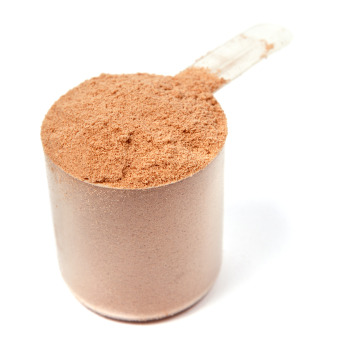 How many times have you heard that
protein is an essential part of a healthy diet? Personally, I stumble
into this phrase almost every day and preach it myself, when I work
with my clients. The importance of consuming at least 1 gram of
protein per pound of lean body mass cannot be overlooked. Meats,
fish, eggs, dairy are amazing sources of this essential nutrient.
However, these sources are not always as accessable as we want them
to be. This is when protein powders come into play. Protein shakes
have gained a great popularity due to their convenience and fast
rates of absorption. Downing a protein shake along with some simple
carbs post workout kickstarts the anabolic process in the body,
promoting rebuilding of the damaged muscle tissue making sure that
you get a full benefit from the time spent at the gym. However, going
to a supplement store can make your head spin from the available
kinds, brands and flavors available today. Which one to choose? In
Part 1 I will talk about the two most popular kinds of protein;
casein and whey (isolate and hydrolized). Part 2 of this article will
talk more about rice, hemp, soy and other kinds of protein powders.
How many times have you heard that
protein is an essential part of a healthy diet? Personally, I stumble
into this phrase almost every day and preach it myself, when I work
with my clients. The importance of consuming at least 1 gram of
protein per pound of lean body mass cannot be overlooked. Meats,
fish, eggs, dairy are amazing sources of this essential nutrient.
However, these sources are not always as accessable as we want them
to be. This is when protein powders come into play. Protein shakes
have gained a great popularity due to their convenience and fast
rates of absorption. Downing a protein shake along with some simple
carbs post workout kickstarts the anabolic process in the body,
promoting rebuilding of the damaged muscle tissue making sure that
you get a full benefit from the time spent at the gym. However, going
to a supplement store can make your head spin from the available
kinds, brands and flavors available today. Which one to choose? In
Part 1 I will talk about the two most popular kinds of protein;
casein and whey (isolate and hydrolized). Part 2 of this article will
talk more about rice, hemp, soy and other kinds of protein powders.
Casein:
Protein
contained in milk is divided into 80% casein and 20% whey. During the
manufacturing of cheese whey is separated from casein. Casein is a
very natural form of protein and is not denatured during the
manufacturing in any way. It is rich in naturally occuring vitamins
and minerals. The slow absorption of casein makes it an amazing
protein source right before bed, as it will feed your muscles, during
the most catabolic time of the day – when you are asleep.
Whey:
Whey protein has
the fastest rate of absorption and is great to supplement with right
after the workout, when the muscles are depleted and are in need for
an immediate refuel. Unlike casein, the extraction of whey is far
more complex and versatile. In fact, the method used in extracting
whey can determine its quality. Originally, whey contains fat and
lactose from the milk that are separated from it during the
filtration process. There are two types of whey filtration: 1) micro
filtration ion exchange and 2) ion exchange. Let's take a look at
both of these methods:
Micro
filtration:
Whey is pushed
through a membrane that filters protein from the lactose and fat.
This is achieved based on the size of the membrane's pores that is
suited to the size of the protein molecules. This method is much more
sparing that the ion exchange process and does not cause damage to
the protein.
Ion exchange:
During this
process, whey protein is mixed with battery acid (yes the one that's
in the batteries of your remote control) and salt water. An electric
charge is then let throught the mixture making the protein to
separate and attach itself to the vessel of the electric charge. It
is then collected and this is how whey protein is made. However, the
acidity of the filtering mix can damage some of the proteins that are
responsible for boosting immune system, healthy digestion, calcium
absorption and antiviral processes. Furthermore, during this process
a large amounts of essential amino acids are destroyed along with the
proteins that are responsible for preventing cancer.
The ion exchange
process damages many of the good qualities of whey protein, but the
main advantage of this method is that the end product results in
lower carb and fat concentration and may contain a bit more of
branched chain amino acids (BCAAs). I also results in higher sodium
content than whey concentrate (whey protein with less than 85%
protein concentration per gram). The easiest way to identify whether
or not your whey protein had undergone such process is to look at the
ratio between sodium and potassium. Higher sodium generally means
that ion exchange had been used (Protein Methods by Bollag).
In other words,
be careful when choosing a protein powder. Read the nutritional value
label and make sure that the sodium content is low. Don't waste your
money on whey that has been extracted via ion exchange, as you will
just pay for a partially damaged product.

No comments:
Post a Comment